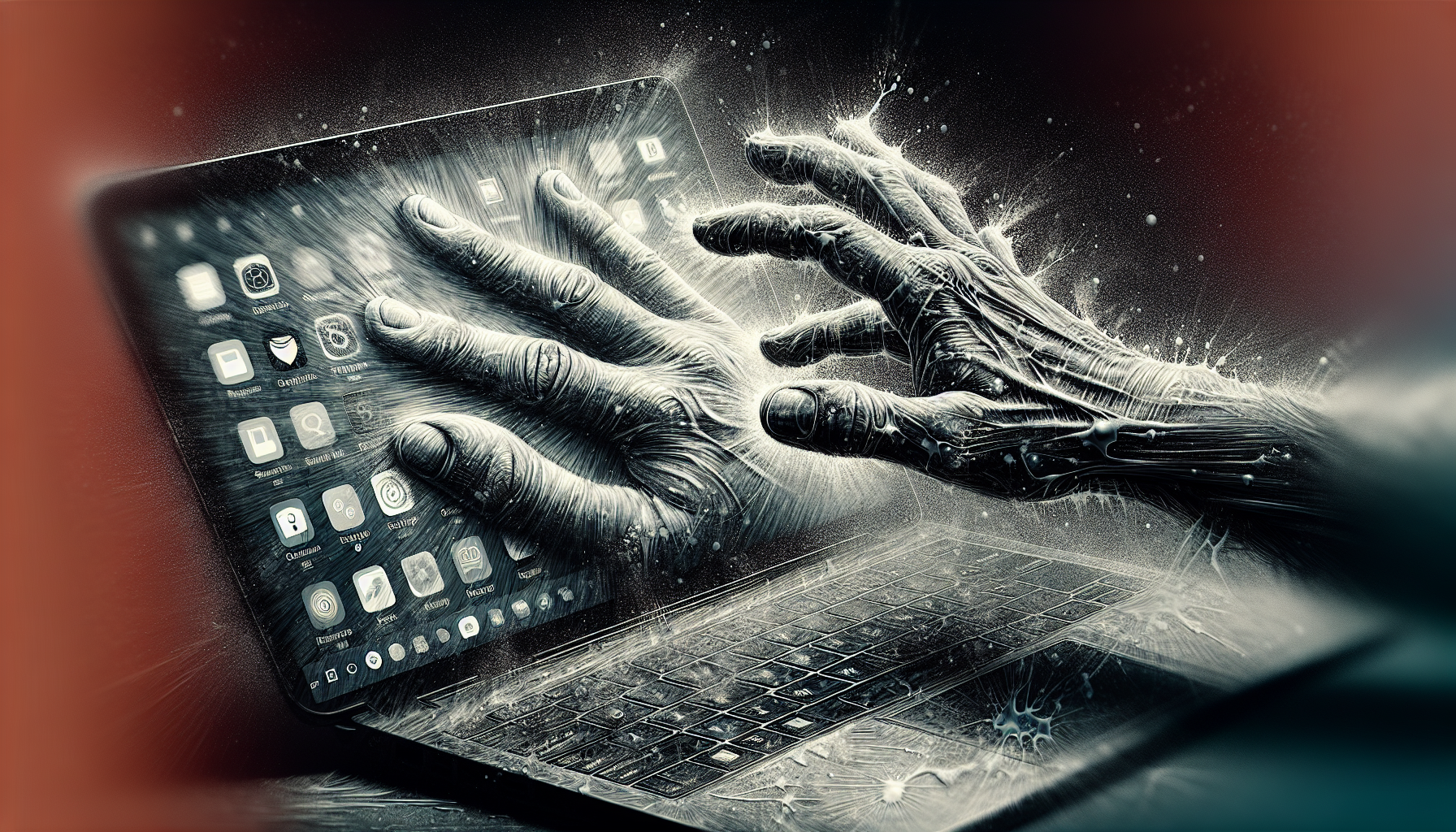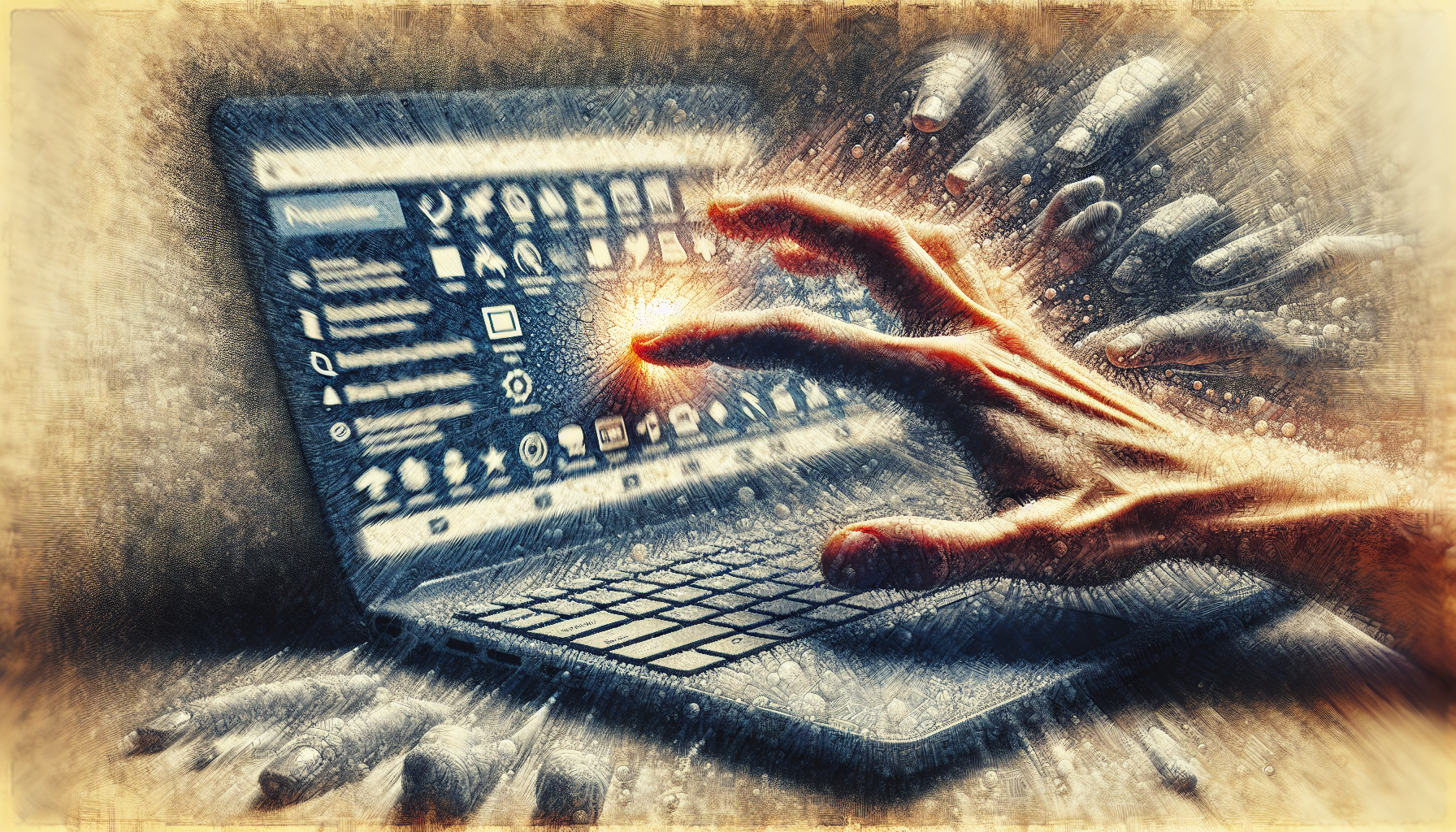







Imagine having the convenience of a laptop that allows you to navigate through your tasks and applications with just a touch of your finger. Sounds amazing, right? However, as with any technology, there are always drawbacks to consider. In this article, we will explore the disadvantages of owning a touch screen laptop. From potential durability issues to increased eye strain, it’s essential to weigh these factors before making a decision. So, let’s dive into the world of touch screen laptops and discover the downsides you should be aware of.

Increased Cost
Higher initial cost
One of the major disadvantages of a touch screen laptop is the higher initial cost compared to traditional laptops. Incorporating touch screen technology into laptops involves additional manufacturing processes and components, which ultimately contribute to the higher price tag. As a consumer, you need to consider whether the added cost is worth the touch screen functionality for your specific needs.
Expensive repairs and replacements
Another drawback of touch screen laptops is the potential for expensive repairs and replacements. Touch screens are more delicate and prone to damage compared to regular screens. In case of accidental drops or impacts, the touch screen can crack or become unresponsive, requiring costly repairs or even screen replacement. It is important to handle touch screen laptops with extra care to avoid incurring these additional expenses.
Limited Battery Life
Shorter battery life
Touch screen laptops are known to have shorter battery life compared to their non-touch counterparts. The touch screen technology requires constant power supply to detect and respond to your touch inputs. This increased power consumption can significantly impact the overall battery life of the device, limiting the amount of time you can use it without needing to recharge. If you prioritize long battery life for your portable computing needs, it is essential to consider this drawback before investing in a touch screen laptop.
Increased power consumption
Furthermore, the touch screen functionality itself can lead to increased power consumption. The constant detection and processing of touch inputs require additional system resources, including the processor and graphics card, which in turn consume more power. This increased power usage can affect the overall performance of the laptop and lead to decreased battery efficiency. If you often find yourself on the go without easy access to power outlets, this limitation may impact your overall user experience.
Ergonomic Concerns
Fatigue and discomfort
Using a touch screen laptop for extended periods can lead to fatigue and discomfort. Unlike traditional laptops, where you can comfortably rest your hands on the keyboard and use a touchpad or mouse, touch screen laptops require you to continuously lift your arm to interact directly with the screen. This constant strain on your arm and shoulder muscles can lead to discomfort and fatigue, making long sessions of touchscreen usage less ergonomic compared to using a keyboard and touchpad combination.
Reduced typing efficiency
Another ergonomic concern with touch screen laptops is the potential reduction in typing efficiency. When typing on a traditional laptop, you can rest your palms on the laptop surface without accidentally activating any touch screen features. However, with touch screen laptops, the surface of the screen is the primary input device, making accidental touches and cursor movements more likely. This can result in increased errors and a slower typing speed, particularly for individuals who are accustomed to traditional laptop keyboards.
Fingerprints and Smudges
Visible fingerprints
A common issue with touch screen laptops is the visibility of fingerprints. Unlike traditional laptops, touch screen surfaces are more prone to showing oils, dirt, and fingerprints due to the direct interaction with your fingers. The accumulation of fingerprints on the screen can impair the overall visibility and clarity, especially when working in brightly lit environments or under direct sunlight. Constantly wiping and cleaning the screen becomes necessary to maintain optimal visibility, which can be cumbersome and time-consuming.
Impaired visibility
In addition to fingerprints, the presence of smudges and other marks on the touch screen can further impair visibility. When the screen is not pristine, it becomes difficult to view content clearly, affecting readability and potentially leading to eye strain. It is important to regularly clean the screen to ensure maximum visibility, but even with diligent maintenance, the risk of smudges and impaired visibility remains a downside to touch screen laptops.

Screen Damage
Scratches and cracks
The touch screen component of a laptop is inherently more vulnerable to scratches and cracks compared to traditional laptop screens. The absence of a protective keyboard or touchpad directly in front of the screen increases the likelihood of accidental damage when it comes into contact with sharp objects or when the laptop is mishandled. Scratches on the touch screen can interfere with touch accuracy and responsiveness, while cracks can render portions of the screen unusable. The cost of repairing or replacing a damaged touch screen can be substantial, making this a significant disadvantage for touch screen laptops.
Greater susceptibility to damage
Furthermore, touch screen laptops are generally more susceptible to damage from external factors such as spills or impact. As the screen is the primary means of input, any damage to the touch screen can severely impact usability. Additionally, the complexity of touch screen technology makes repairs more challenging and consequently more expensive. This susceptibility to damage and the potential costs associated with it should be carefully considered before opting for a touch screen laptop.
Potential for Accidental Inputs
Unintended actions
With touch screen laptops, there is a greater potential for unintended actions due to accidental touches. When using the touch screen, you may inadvertently trigger certain commands or execute unintended actions, such as closing a window or zooming in on content. This can be frustrating, especially when you are working on important tasks or navigating through complex applications. Some touch screen laptops incorporate palm rejection technology to minimize accidental inputs, but it is not foolproof and may still occur, potentially disrupting your workflow.
Interference while using stylus or mouse
Touch screen laptops can also experience interference while using a stylus or an external mouse. When performing precise tasks, such as drawing or graphic design, the touch screen can inadvertently register unintended touches from your palm or fingers, causing erratic behavior and disrupting your work. Additionally, using an external mouse can be challenging on touch screen laptops since accidental palm or finger contact with the screen can lead to unwanted cursor movements. These potential interferences can be disruptive, especially for professional tasks that require precision and accuracy.
Limited Applicability
Not suitable for certain tasks
While touch screen functionality can be advantageous for certain tasks, it may not be suitable for all types of activities. Tasks that involve extensive typing or require precise cursor control, such as writing long documents or performing intricate photo editing, may be more efficiently accomplished with a traditional laptop interface rather than a touch screen. The lack of tactile feedback and the potential for accidental inputs can hinder productivity and reduce efficiency, which is an important consideration when determining the applicability of touch screen laptops to your specific needs.
Inefficient for productivity software
Touch screen laptops may also be inefficient for certain productivity software. Some applications, particularly those not designed with touch screen interfaces in mind, may not offer smooth and intuitive touch interactions. This can lead to a frustrating user experience with reduced functionality and limited access to certain features. It is essential to evaluate the compatibility of your preferred software and applications with touch screen functionality before deciding on a touch screen laptop.
Glossy Screen Reflections
Glare and reflections
One of the drawbacks of touch screen laptops is the occurrence of glare and reflections on the screen. The glossy nature of touch screen displays can amplify reflections from surrounding light sources, making it challenging to view content clearly, particularly in brightly lit environments. This excessive glare can cause eye strain and reduce the overall readability of the screen. Adjusting screen angles and working in shaded areas can help mitigate the impact of reflections, but it is an ongoing concern that touch screen laptop users need to consider.
Reduced readability in bright environments
Moreover, touch screen laptops may have reduced readability in bright environments due to the glossy screen surface. The combination of bright ambient light and screen reflections can make it difficult to discern on-screen content, potentially affecting productivity and causing eye strain. Choosing a laptop with an anti-glare or matte screen option can help minimize these issues, but it may limit your selection and add an extra cost.
Incompatibility with Gloves
Lack of responsiveness
For users who frequently wear gloves, touch screen laptops may present a significant disadvantage. Most touch screen technologies rely on the electrical conductivity of the human skin to register touch inputs. When wearing gloves, the lack of direct contact between your fingers and the screen can result in decreased responsiveness or complete unresponsiveness, hindering your ability to use the touch screen effectively. This limitation can be particularly problematic in cold weather conditions or environments where gloves are necessary for safety or hygiene reasons.
Limited use in cold weather
Touch screen laptops also face limitations in cold weather conditions. If you frequently work outdoors or in colder environments, you may find it challenging to use a touch screen laptop without removing your gloves. Touch screen functionality typically requires direct bare skin contact to detect inputs accurately, which is not possible when wearing gloves. This limitation can disrupt workflow and reduce productivity, making touch screen laptops less practical for individuals who need to work in colder climates.
Eye Strain and Discomfort
Extended use can cause fatigue
The prolonged use of touch screen laptops can lead to eye strain and discomfort. As touch screen displays emit light directly towards the user, extended exposure can cause eye fatigue and dryness. The constant focus shifting between the screen and your fingers can also contribute to eye strain. Taking regular breaks and implementing proper ergonomics, such as adjusting screen brightness and ensuring proper lighting levels, can help alleviate these symptoms. However, it is important to be mindful of the potential for eye strain, particularly during long hours of touch screen usage.
Increased susceptibility to eye strain
Furthermore, touch screen laptops may increase susceptibility to eye strain compared to traditional laptops. The absence of physical keys and touchpads requires you to concentrate more on the screen for both input and navigation. This continuous focus on the screen, coupled with the absence of tactile feedback, can put additional strain on your eyes, leading to discomfort and reduced productivity. Individuals with pre-existing vision or eye-related conditions should be especially cautious when considering touch screen laptops.
In conclusion, while touch screen laptops offer convenience and intuitive interaction for certain tasks, they also come with several disadvantages. The increased cost, limited battery life, ergonomic concerns, visibility issues, screen damage susceptibility, potential for accidental inputs, limited applicability, glossy screen reflections, incompatibility with gloves, and the risk of eye strain are all important factors to consider when deciding on a touch screen laptop. Understanding the specific limitations and drawbacks associated with touch screen technology will help you make an informed decision based on your unique usage requirements and preferences.







